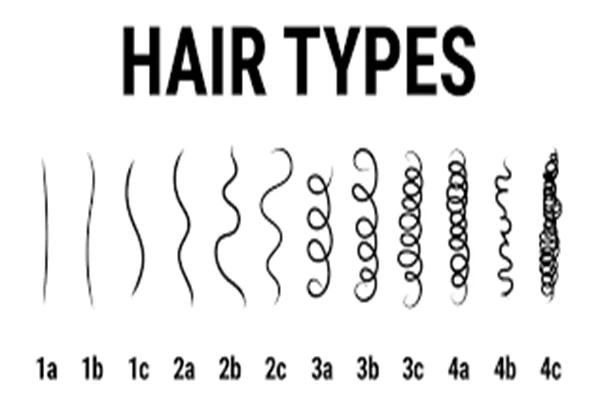Afro hair transplant procedures require advanced expertise due to the unique structure of tightly coiled, curly, and dense hair. Compared to straight or wavy hair, Afro-textured hair features curved follicles, increased fragility, and a higher risk of transection during graft extraction. This guide explores the techniques, challenges, and results of Afro hair transplant surgery, along with post-operative care and cost details in Turkey.
Understanding Afro Hair and Its Biological Structure
Afro hair is characterized by tightly curled strands that grow from curved follicles beneath the scalp. This natural curl pattern results in thicker, denser hair but also makes graft extraction and implantation more complex. Successful transplantation requires precise angling and specialized microsurgical tools to preserve follicle viability.
| Afro Hair Type | Curl Pattern | Texture & Density | Clinical Considerations |
|---|---|---|---|
| Type 4A | Defined, tight coils | Fine–medium strands, moderate density | Requires gentle handling to prevent breakage |
| Type 4B | Z-shaped curls with less definition | Thicker and denser than 4A | Higher transection risk during graft extraction |
| Type 4C | Tight, compact coils with minimal definition | Densest and most fragile type | Needs specialized punch tools and slow extraction |
What Is an Afro Hair Transplant?
An Afro hair transplant is a microsurgical procedure designed to restore hair in individuals of African descent or those with curly, kinky, or coily hair. The surgeon transfers follicular units from the donor area—usually the occipital region—to thinning or balding zones. When performed by an experienced specialist, transplanted grafts retain their curl pattern and grow naturally, producing seamless, long-term results.
Surgical Techniques for Afro Hair Transplantation
There are three main methods used for Afro hair restoration. Each technique offers specific advantages depending on the patient’s scalp condition, donor density, and desired result.

| Technique | Procedure Overview | Advantages | Healing & Scarring |
|---|---|---|---|
| FUE (Follicular Unit Extraction) | Individual follicles extracted using micro punches | Minimal scarring, natural hairline, precise density control | Quick recovery; tiny, dot-like scars |
| DHI (Direct Hair Implantation) | Grafts implanted directly with Choi implanter pen | No pre-incisions, denser placement, faster healing | Virtually scar-free; excellent for female or temple restoration |
| FUT (Follicular Unit Transplantation) | Strip excision followed by microscopic graft separation | High graft yield; suitable for large bald areas | Linear donor scar; longer downtime |
Candidate Evaluation and Pre-Surgical Planning
A thorough evaluation includes:
- Scalp assessment (curl density, donor capacity, follicle angulation)
- Medical history review (autoimmune or dermatological disorders)
- Digital trichoscopy for graft count and hair diameter
- Consultation for expectations regarding hairline design and density
Afro hair patients often require slower extraction speed and custom punch diameters (0.9–1.0 mm) to prevent follicular transection.
Benefits of Afro Hair Transplant
- Natural appearance: Transplanted curls maintain the same direction and thickness as native hair.
- Permanent restoration: Results are long-lasting, as transplanted grafts are DHT-resistant.
- Psychological impact: Restored density enhances confidence and social well-being.
- Custom design: Suitable for hairline correction, temple density, or full-scalp coverage.
Post-Operative Recovery and Aftercare
Recovery for Afro hair transplant patients is typically straightforward, provided that aftercare protocols are strictly followed.
First 7 days: Mild swelling and scabbing are common; avoid touching or scratching.
Day 10–14: Grafts stabilize; patients may resume gentle washing.
Month 1–3: Shedding phase (shock loss) occurs.
Month 4–12: Visible regrowth; texture becomes denser and curl pattern returns.
Key Aftercare Guidelines
- Avoid direct sunlight, sweating, and swimming for 2 weeks.
- Use only sulfate-free, pH-balanced shampoo.
- Sleep with head elevated for 3 nights post-op.
- Refrain from wearing tight caps or hairstyles that cause traction.
Maintaining Healthy Afro Hair After Transplant
- Deep conditioning: Hydrates scalp and enhances elasticity.
- Avoid excessive heat styling: Prevents shaft brittleness.
- Regular trimming: Reduces split ends and promotes uniform growth.
- Nutritious diet: Zinc, iron, and protein-rich foods support follicular health.
Afro Hair Transplant Cost in Turkey
Turkey offers world-class hair restoration at competitive prices. At Quartz Hair Clinic Istanbul, Afro hair transplantation is performed by surgeons specializing in curly-hair physiology and ethnic hairline reconstruction.
| Package | Inclusions | Average Price (USD) |
|---|---|---|
| Standard FUE Package | Up to 3,000 grafts, local anesthesia, PRP therapy, hotel + transfer | $2,000 – $2,500 |
| DHI Premium Package | Up to 4,000 grafts, sedation, VIP hotel, post-care kit | $2,500 – $3,000 |
| Revision / Density Boost | Additional 1,000–1,500 grafts + PRP reinforcement | $1,500 – $2,000 |
Note: Package prices may include airport transfers, accommodation, and interpreter services. Always confirm total inclusions before booking.
Frequently Asked Questions
Is Afro hair transplant more difficult than straight-hair procedures?
Yes. The curvature of Afro follicles increases the risk of transection, requiring specialized surgical tools and experience.
Does transplanted Afro hair retain its curl pattern?
Absolutely. Since grafts originate from your own donor area, the natural curl and texture remain intact.
How long until full results appear?
Final density and texture are typically achieved within 9–12 months.
Is the procedure painful?
The operation is performed under local anesthesia, ensuring a comfortable and pain-free experience.
Can women with Afro hair undergo transplantation?
Yes, Afro hair transplant is effective for both men and women experiencing pattern hair loss or traction alopecia.
Afro hair transplant in Turkey combines advanced technology, artistic design, and deep anatomical understanding of curly hair. When performed by experienced surgeons at Quartz Hair Clinic Istanbul, patients achieve natural-looking, permanent results that restore both aesthetics and self-confidence.

